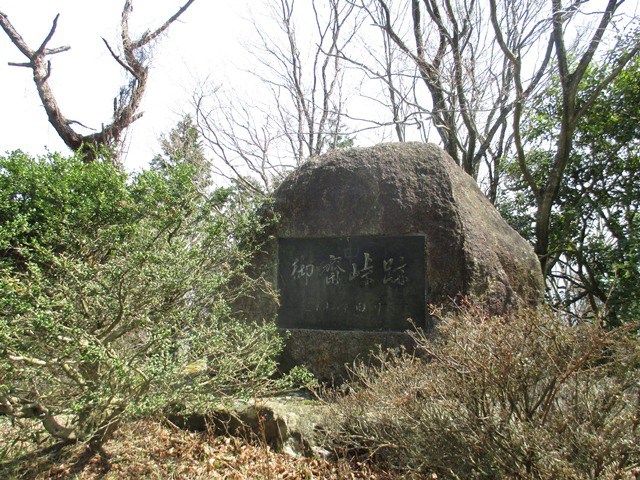
One of the passes connecting Tarao Village in Omi Province and Nishiyama Village in Iga is Otogi Pass. According to the “伊水温故 Isui-ungo,” the name comes from the fact that when the founder of Tōfukuji Temple in Kyoto, Shōichi Kokushi Bennen (聖一国師弁円), visited Ankokuji Temple in Iga , the elders of Nishiyama Village would always share a meal with him on the mountain. Since the meal served to the monks was called Sai(斎), it came to be called Otogi Pass (御斎峠).
However, Bennen died in 1280, and Ankokuji Temple was built in 1346, which does not fit the description of “伊水温故 Isui-ungo. In the “範頼・義経京入事” of “源平盛衰記 Genpei Seisuiki”, there is a legend that Minamoto no Yoshitsune avoided crossing the Otogi Pass because he disliked the name of a waterfall near the Pass, Kubiochi Falls(頸落滝, a waterfall where heads fall off, literal translation). According to “中書家久公御上京日記 Chūsho Iehisakō Gojōkyō Nikki”, Shimazu Iehisa left Kyoto for Ise Jingu Shrine on May 28, 1575, and entered Iga via the Otogi Pass from Koka in Omi Province.
The most famous incident in which the name of the Otogi Pass is mentioned is the so-called “Shinkun Iga Goe”, in which Tokugawa Ieyasu, who was in Sakai at the time of the Honnōji Incident, made a hasty crossing over Iga to return to his home country. It is said that he passed through the Otogi Pass on his way back to home. The Koka people who were escorting him at that time was more than 100, but more than 70 were killed in battle. Ieyasu rewarded them for their noble service, Ieyasu organized the Koka One Hundred-Member Gun Squad to guard the three main gates of Edo Castle. However, it is not certain whether Ieyasu passed through the Otogi Pass or not. It is only one of the many theories about the route of the “Shinkun Iga Goe”.
At Jōkenji Temple in Tarao Village, 石仏十王像 (Sekibutsu Juoh Zou; a stone statue of Buddha Juoh) from the Nanbokucho period still remains, which is said to have been on the roadside of the Otogi Pass in the old days.